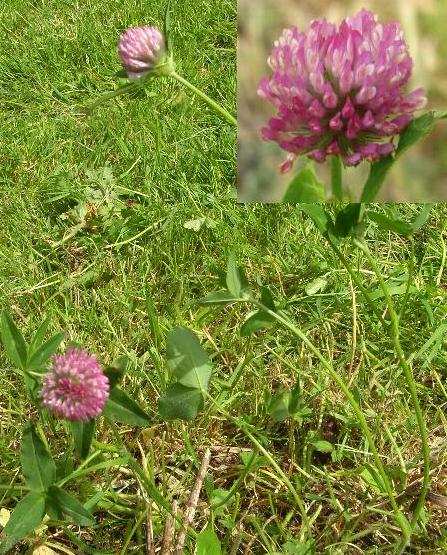Red CloverScientific Name : Trifolium pratense |
A short-lived perennial, it is a member of the Legume family - Fabaceae that spreads mainly by seed. It is widely grown in agriculture as a fodder crop and as it is able to fix it's own nitrogen in nodules on the roots, it improves the fertility of the soil. It is not usually a problem weed in the garden and would be fine in a wildflower meadow, provided the grasses were not too aggressive.
There are isoflavones present in the plant which have a similar effect as estrogen so red clover has been used to treat menopausal symptoms. Other ailments treated are bronchitis, asthma, ulcers, burns and as a sedative.
The leaves are compound, with 3 leaflets and are arranged alternately along the stems. The leaflets have a paler crescent similar to that on White Clover leaves, but they are more elongated with a blunt point.
The dark pink flowers appear from May to September in a dense, ball-shaped cluster. They are borne at the ends of the branching stems.
It is not an aggressive vegetative spreader like the White Clover and can be uprooted relatively easily, but the main growing point must be removed. There are no underground spreading rhizomes and the fine roots do not regrow.
A selective weedkiller containing 2,4D should remove it or a total herbicide such as Glyphosate will work as well. Repeated application may be necessary if it has produced seed.
See related White Clover, Lesser Trefoil and Bird's-foot Trefoil. Also Wood Sorrel, Least Yellow Sorrel and Creeping Wood Sorrel, which have similar leaves.
